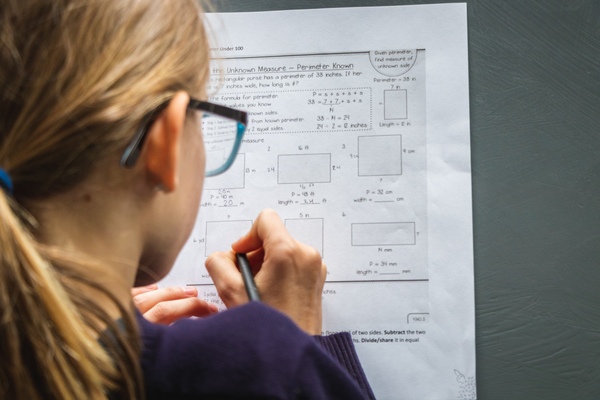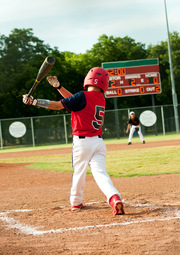The Secrets to Successful Math Education: An Essential Guide for Parents
Math can often be challenging for many students, and parents must take an active role in helping their children succeed with their math education. From mastering basic mathematical concepts to tackling more advanced equations, effective guidance and support from home is absolutely essential.
If you’re looking for ways to help your child gain proficiency in this field of study, this guide is right for you. Here, you will find the secrets to successful math education – proven methods, tips, and strategies designed to get your child on track with their mathematics learning journey.
1. Get a Professional Math Tutor
Hiring a professional math tutor can greatly benefit your child’s mathematical education. An experienced tutor provides personalized lessons tailored to your child’s learning style and ensures the concepts are understood and applied correctly. They are typically equipped with effective teaching strategies to significantly boost your child’s comprehension and retention of math concepts.
Furthermore, a tutor provides immediate feedback, correcting misconceptions before they become ingrained, and offers consistent learning reinforcement. Consequently, if you have a teen struggling with H2 math problems, you can get an affordable H2 Math education tutor online. With the help of a math tutor, your teen can gain the confidence and skills needed to excel in math.
2. Understand Your Child’s Learning Style
Understanding your child’s learning style is critical to supporting their mathematics education. Each child is unique in how they absorb and process information; some may be visual learners, others auditory, and others may learn best through hands-on experiences. By identifying the learning style that resonates most with your child, you can tailor your support and educational tools to suit their needs best.
For instance, visual learners might benefit from colorful diagrams and charts, while auditory learners may grasp concepts better when they are explained aloud. Once you clearly understand your child’s learning style, you can adapt your teaching methods to help them comprehend and excel in mathematics. This personalized approach will not only make learning more enjoyable for your child but will also enhance their overall academic performance.
3. Prepare a Learning Environment
Creating a conducive learning environment is crucial in fostering your child’s mathematical skills. This environment should be free from distractions, well-lit, and equipped with all the necessary educational resources, such as textbooks, notepads, calculators, and interactive educational tools. A dedicated space for learning engenders focus, organization, and a strong work ethic.
Ensuring the environment is inviting and comfortable is essential, as this can significantly impact a child’s learning motivation. Consider adding elements that personalize the space, such as their favorite colors or themed decor that keeps them inspired. In this optimal setting, your child can fully engage with their mathematical studies, boosting their potential for success.
4. Develop a Study Routine
Implementing a consistent study routine is another integral part of successful math education. This routine should be structured to create a balance between school, homework, and leisure activities, ensuring that your child is not overwhelmed. Regular, dedicated study time reinforces what is taught at school and encourages self-discipline and time-management skills.
This routine should also accommodate regular breaks to avoid burnout and keep the mind fresh. Remember to make this schedule flexible to accommodate unforeseen circumstances or special events. By sticking to a consistent study routine, your child can cultivate a healthy learning habit that will serve them well throughout their academic journey.

5. Introduce Math Games and Play
Incorporating math games into your child’s learning process can make math learning more engaging and enjoyable. Games such as puzzles, board games, math coloring, or online interactive games can help reinforce mathematical concepts in a fun and relaxed environment. This method promotes active learning and encourages children to think critically and solve problems creatively.
Games and play related learning activities aid in developing a positive attitude towards math as children associate it with fun and excitement rather than a burdensome task. Introducing math games can be a great way to break the monotony of traditional learning methods and stimulate your child’s interest and curiosity in math. Always remember that the key to successful learning is making it interesting, relatable, and fun.
6. Encourage a Positive Attitude Towards Math
Many students struggle with math due to negative attitudes and beliefs they have developed towards the subject. As a parent, fostering a positive attitude towards mathematics in your child is crucial. Emphasize that making mistakes is part of the learning process and encourage them to ask questions when unsure.
Additionally, incorporating math into daily life can help your child see its practical applications and relevance, making learning more enjoyable. By showing enthusiasm towards math yourself and celebrating your child’s progress and achievements, you can instill a positive mindset that will benefit them in all areas of their education.
Successful math education requires involvement and support from both teachers and parents. By following these secrets, you can help your child develop a strong foundation in mathematics, paving the way for future academic success. Remember to remain patient, encouraging, and understanding as your child navigates through their mathematical journey – with dedication and perseverance, they will surely achieve greatness in this challenging yet rewarding subject.







 Author bio: Cora Gold is the Editor-in-Chief of women’s lifestyle magazine,
Author bio: Cora Gold is the Editor-in-Chief of women’s lifestyle magazine, 


